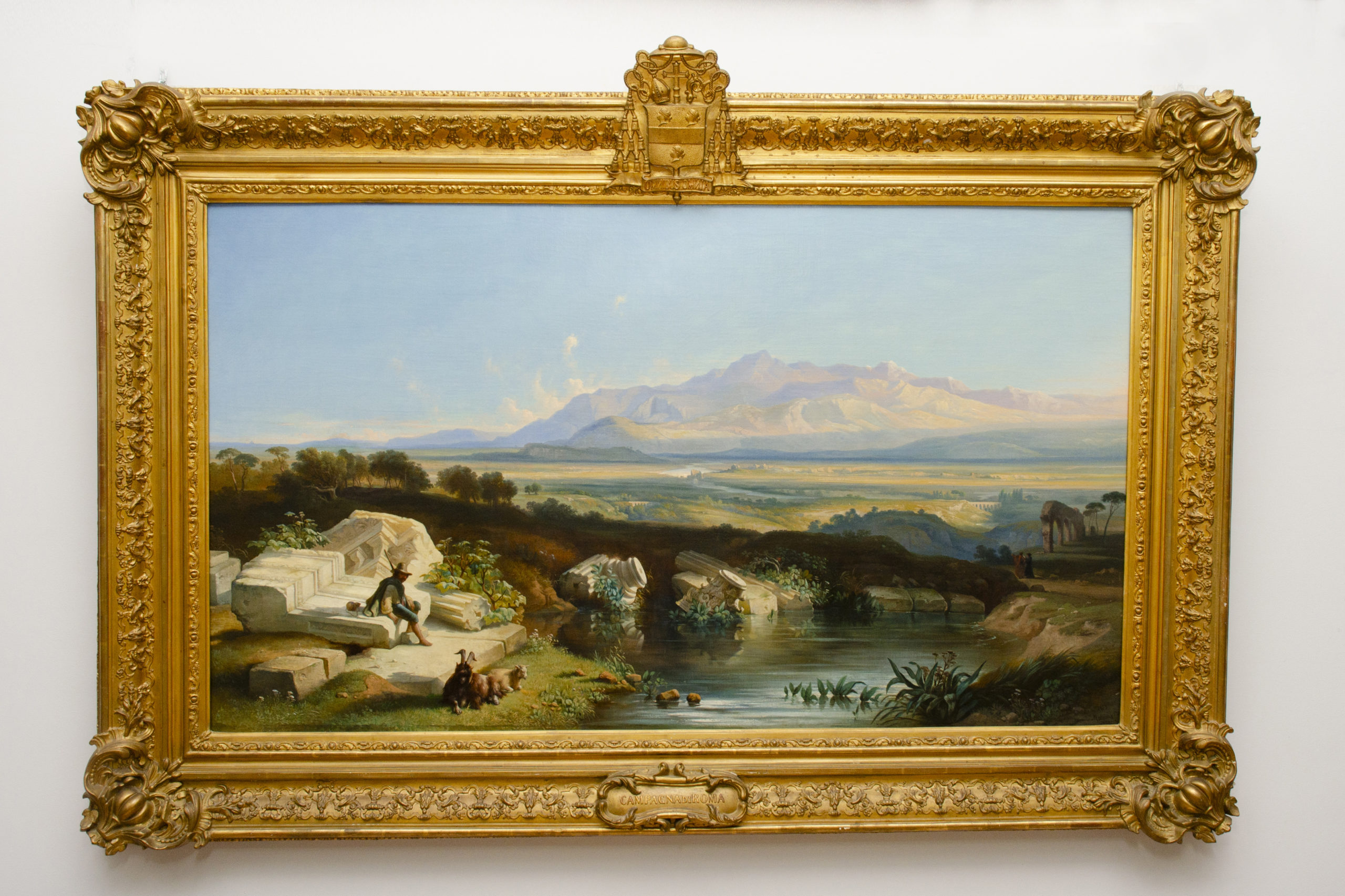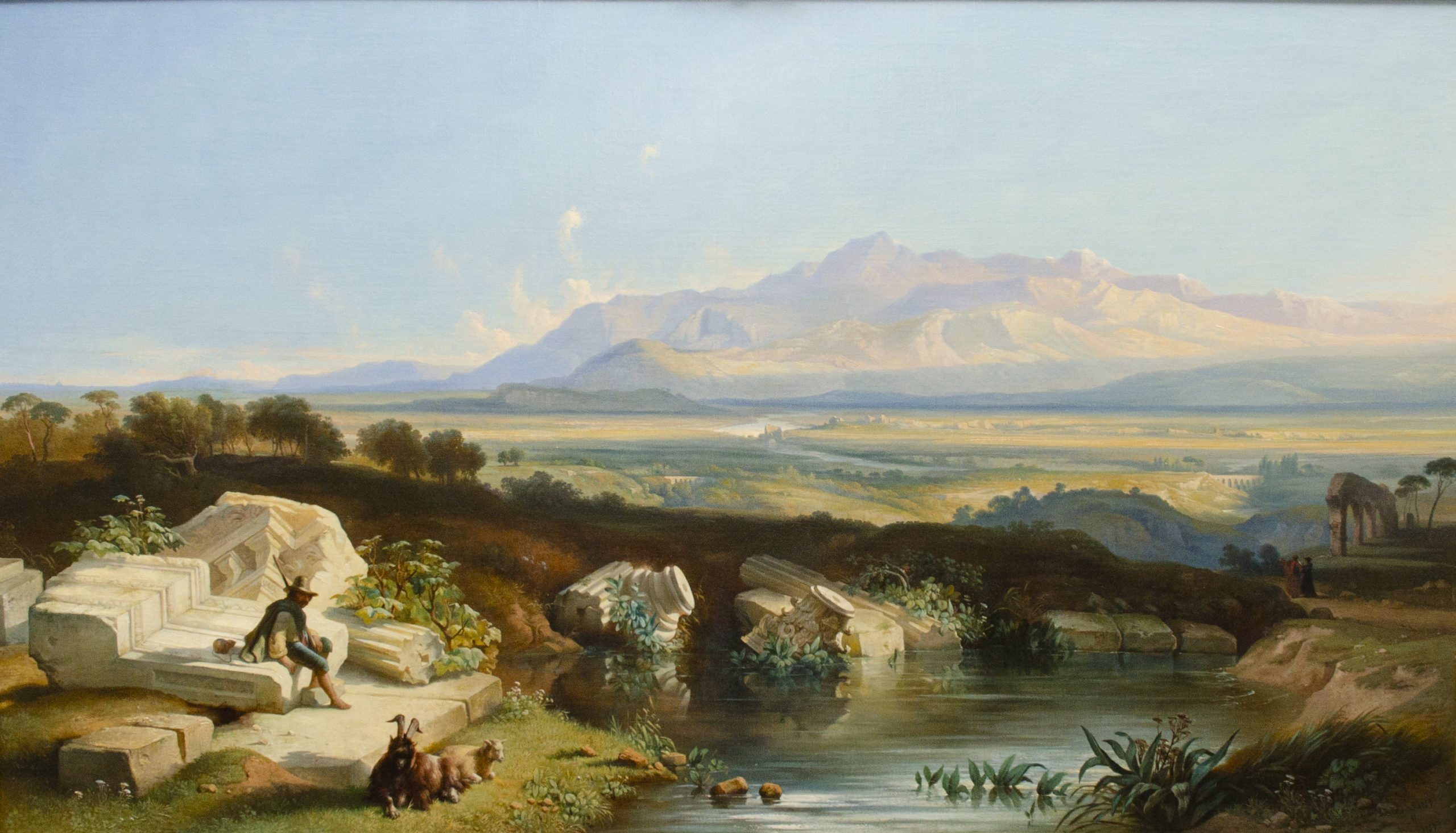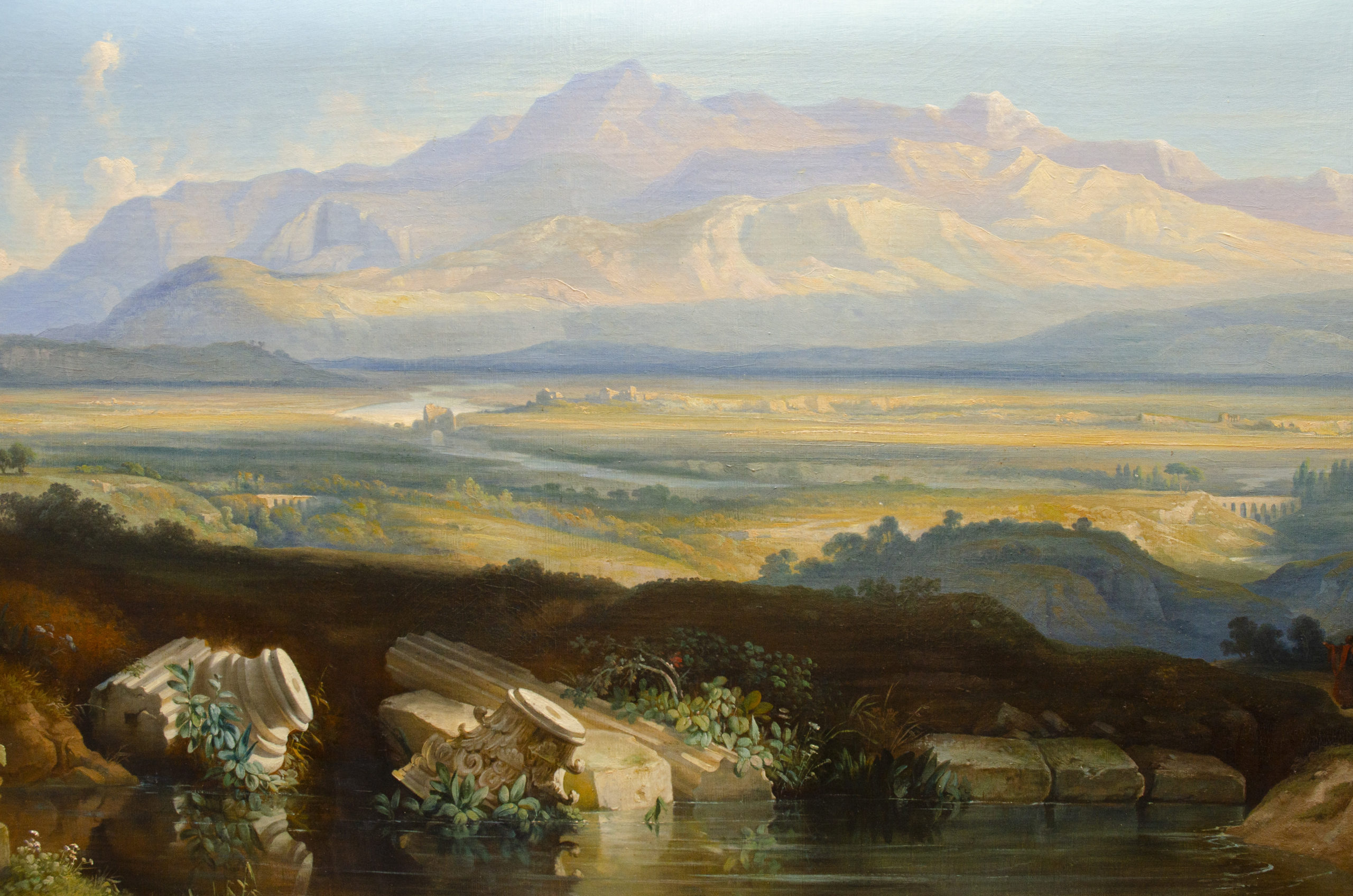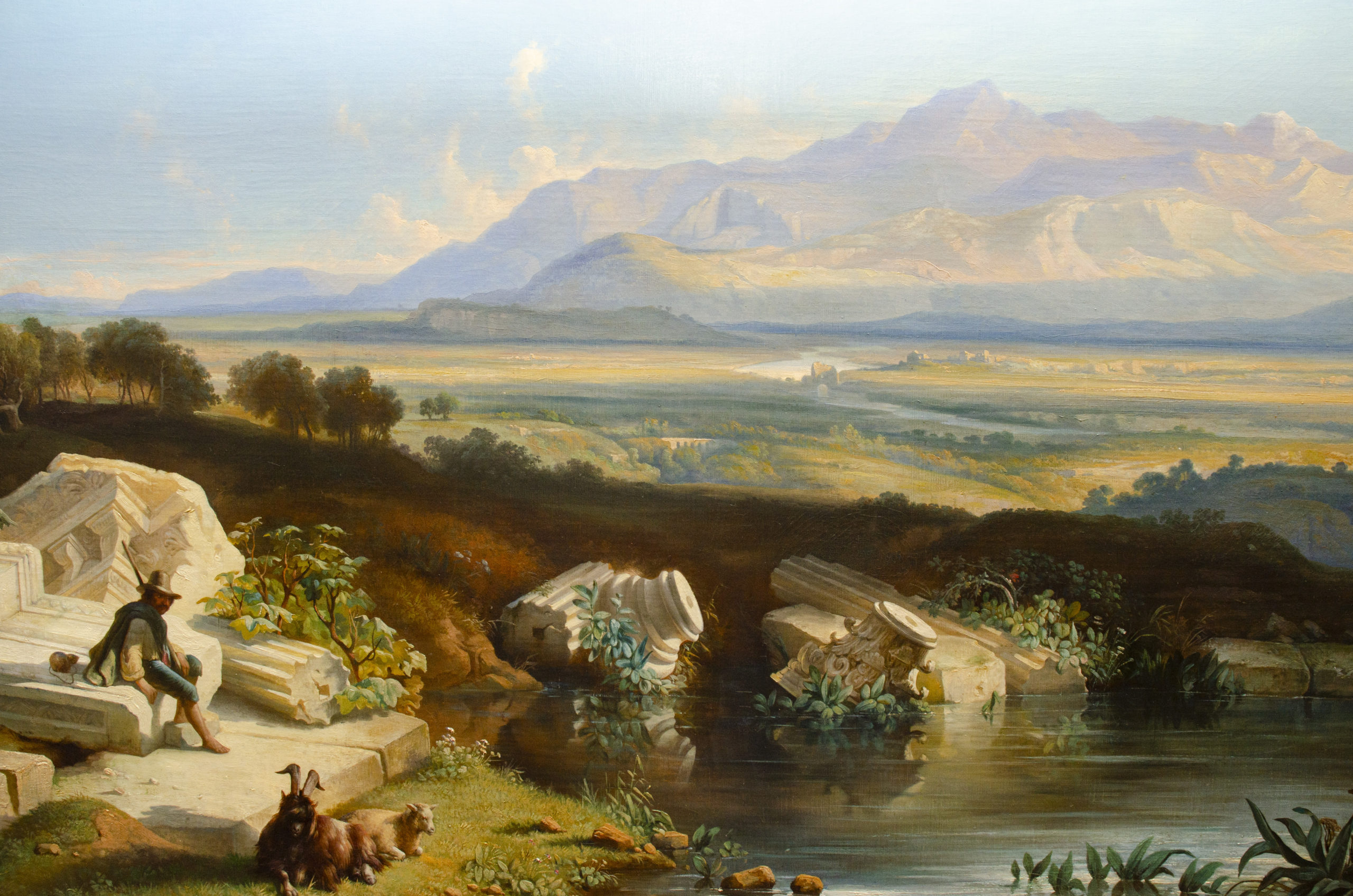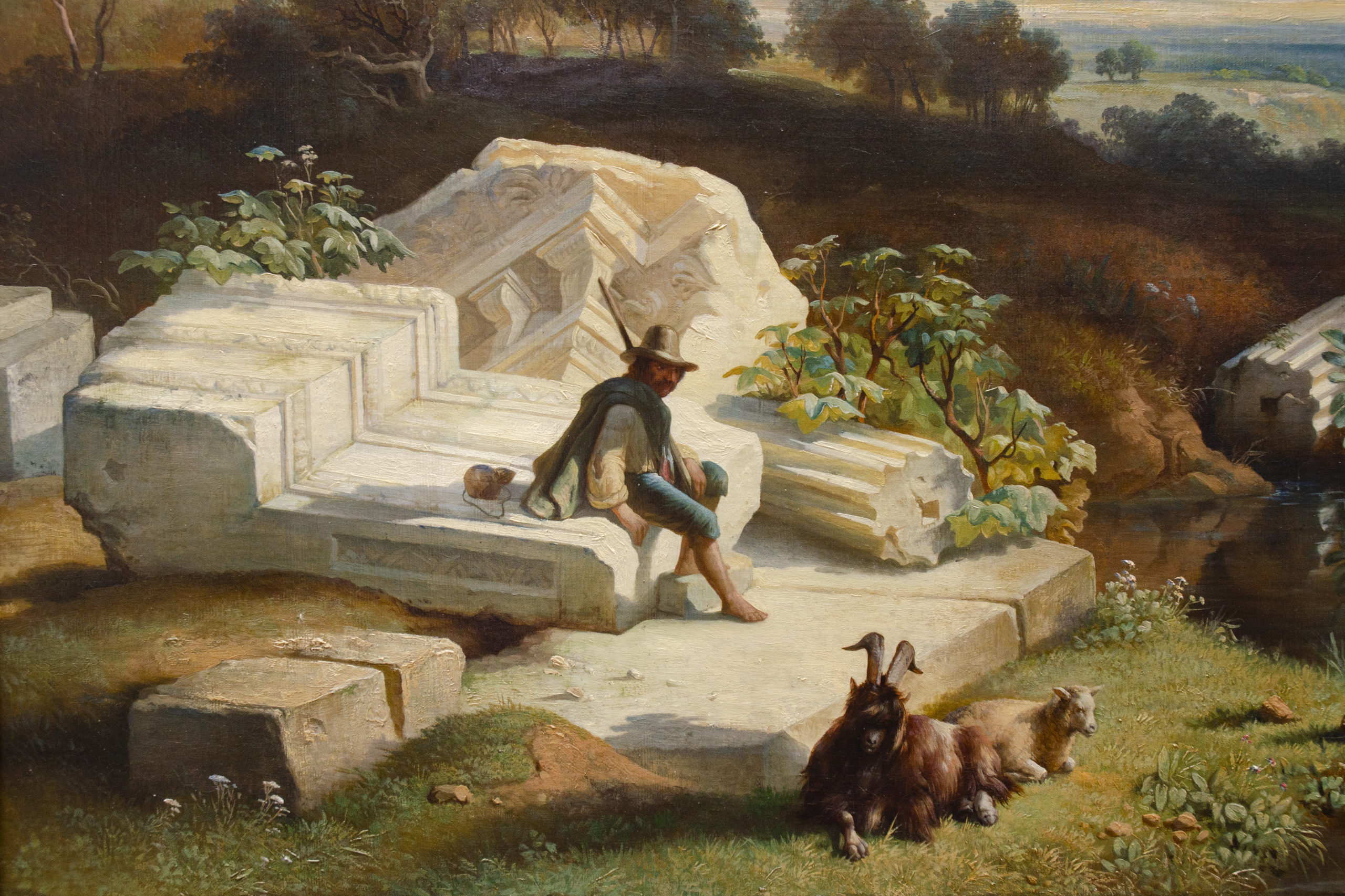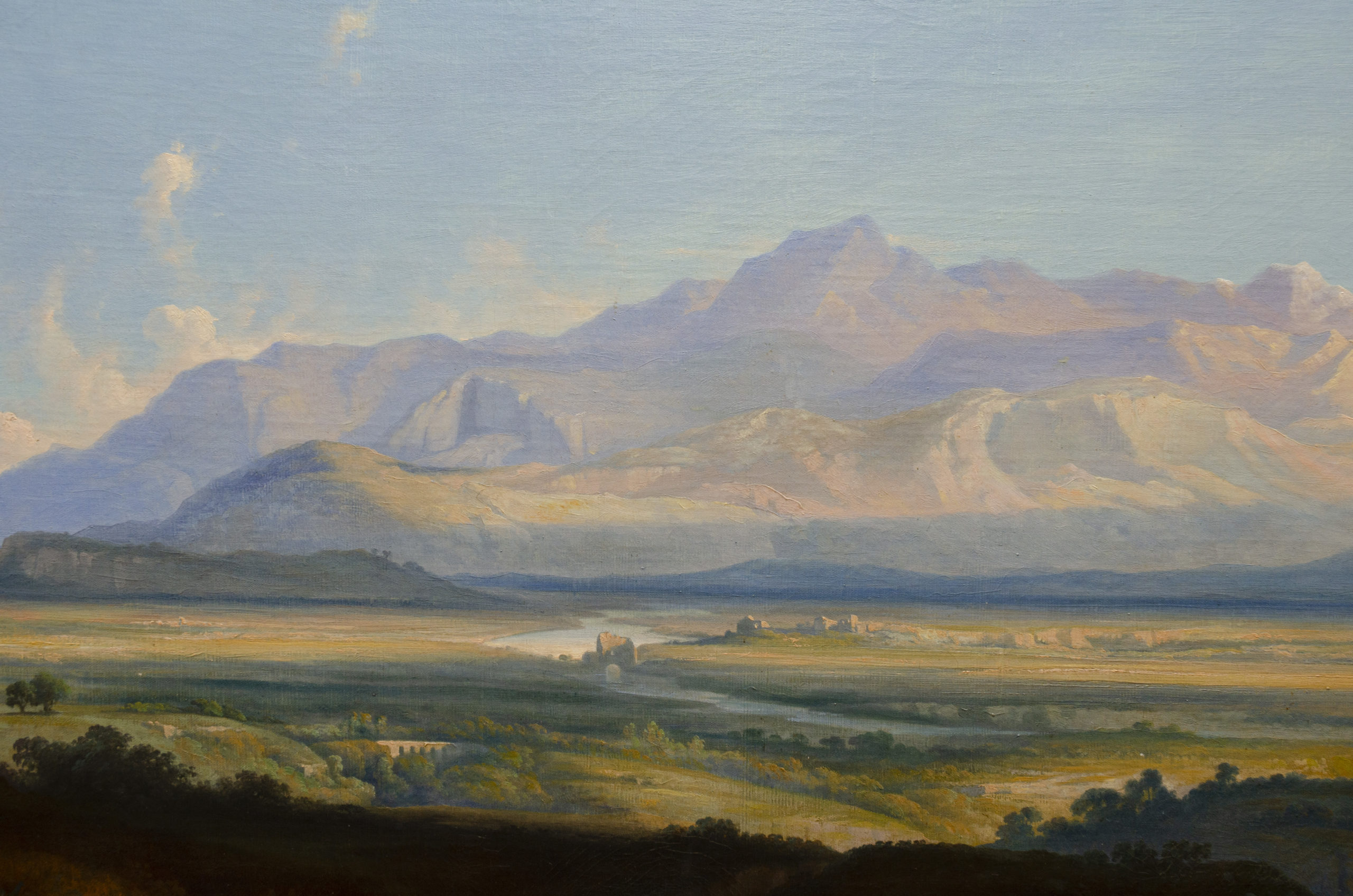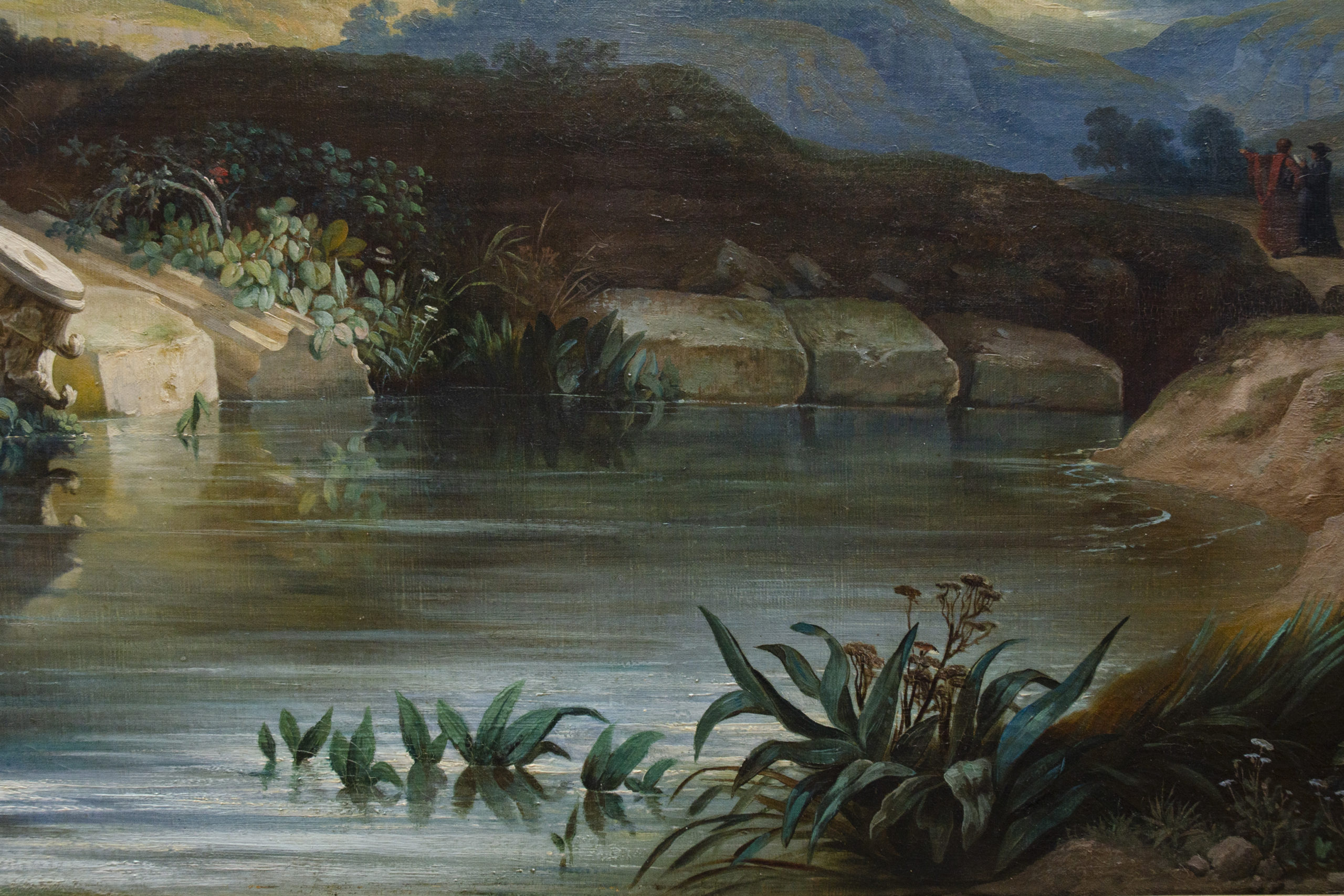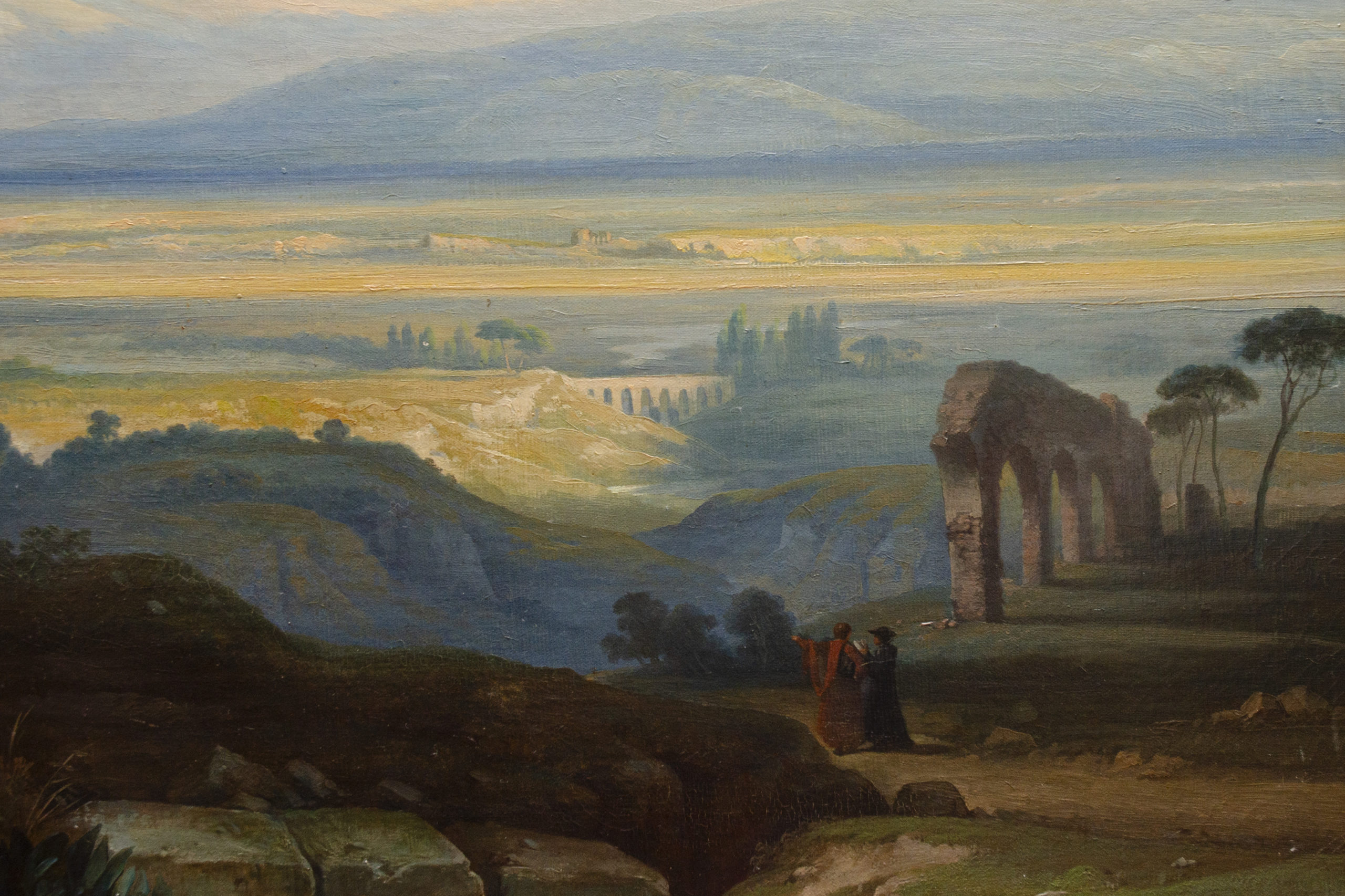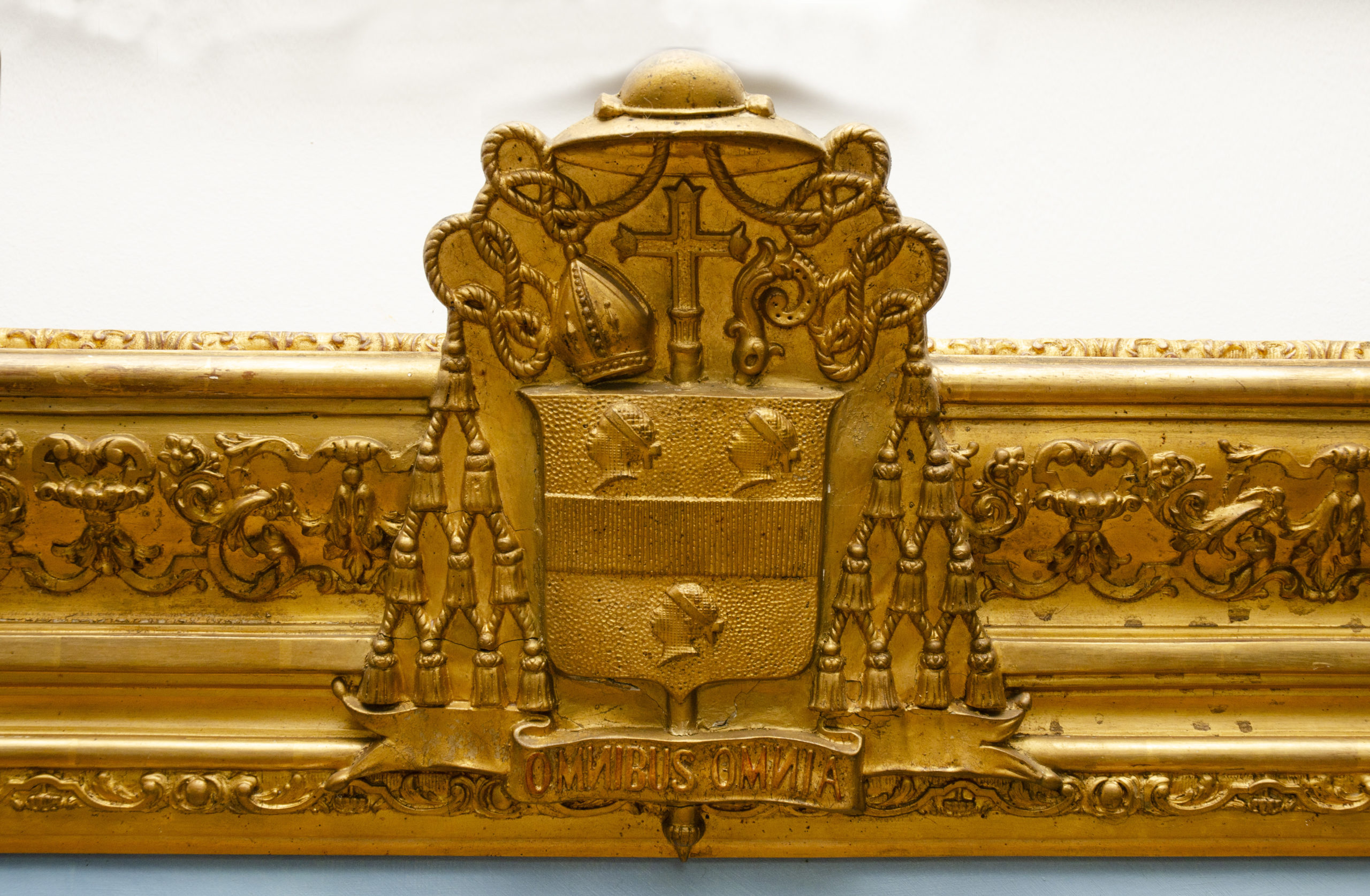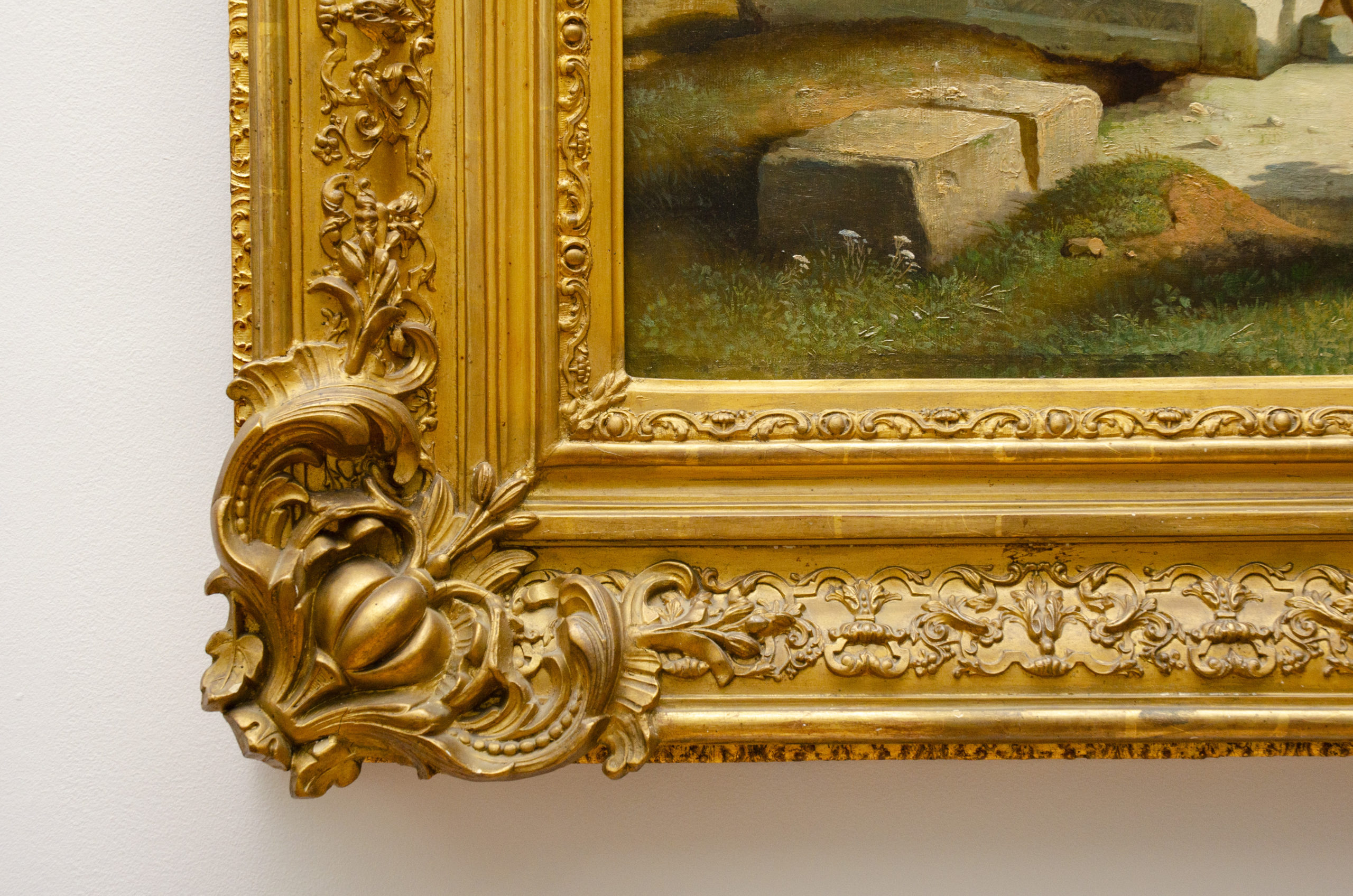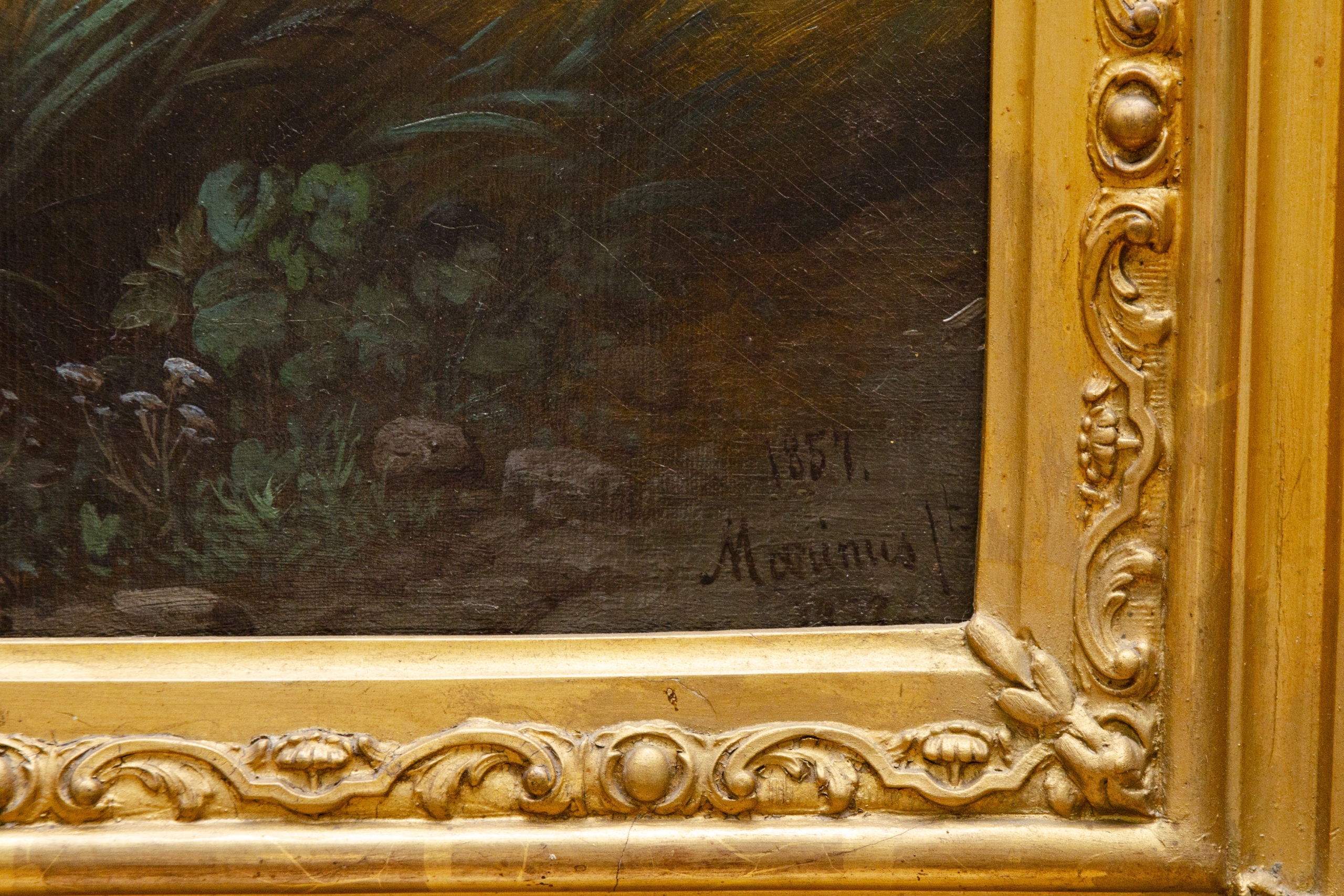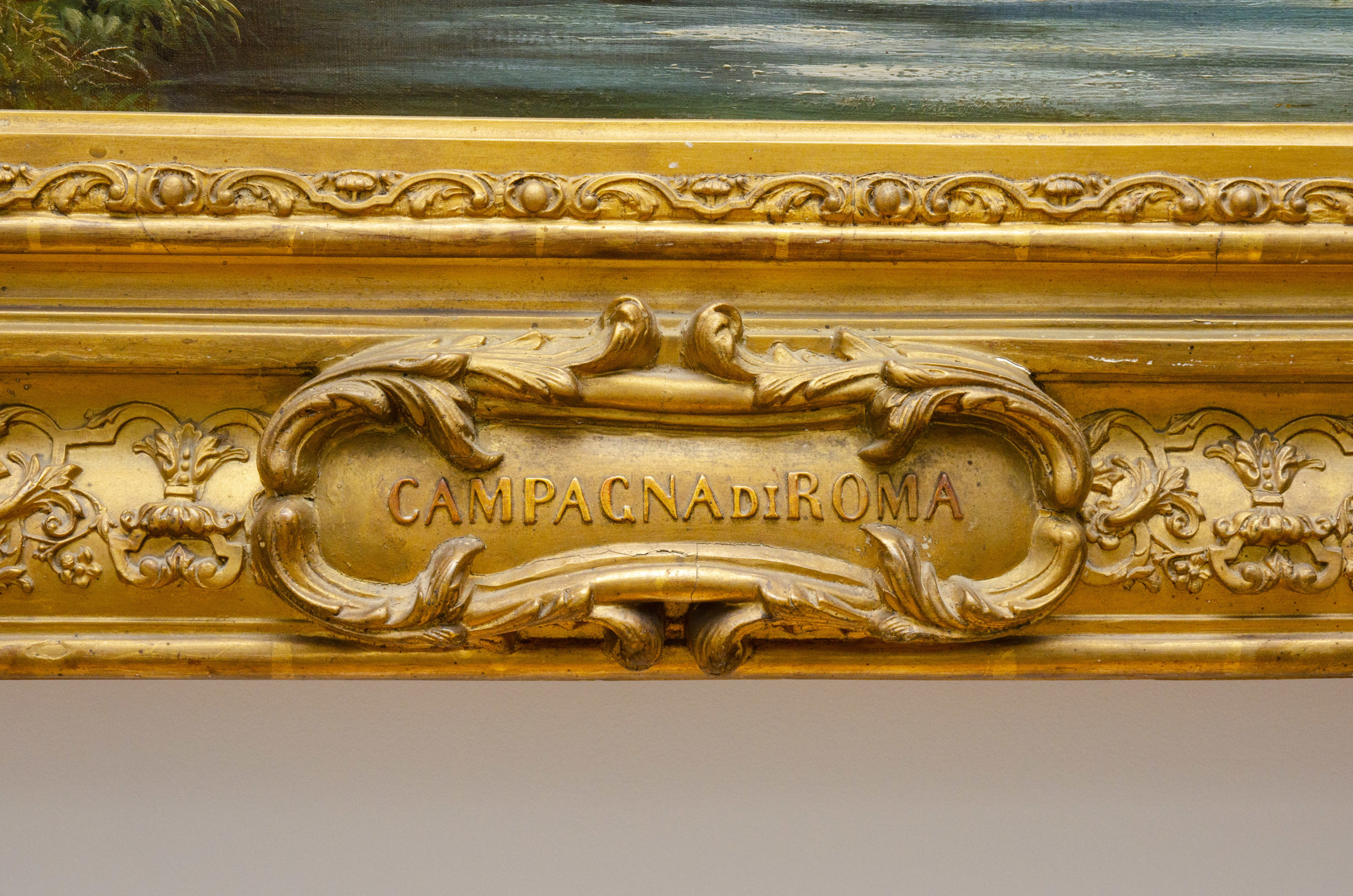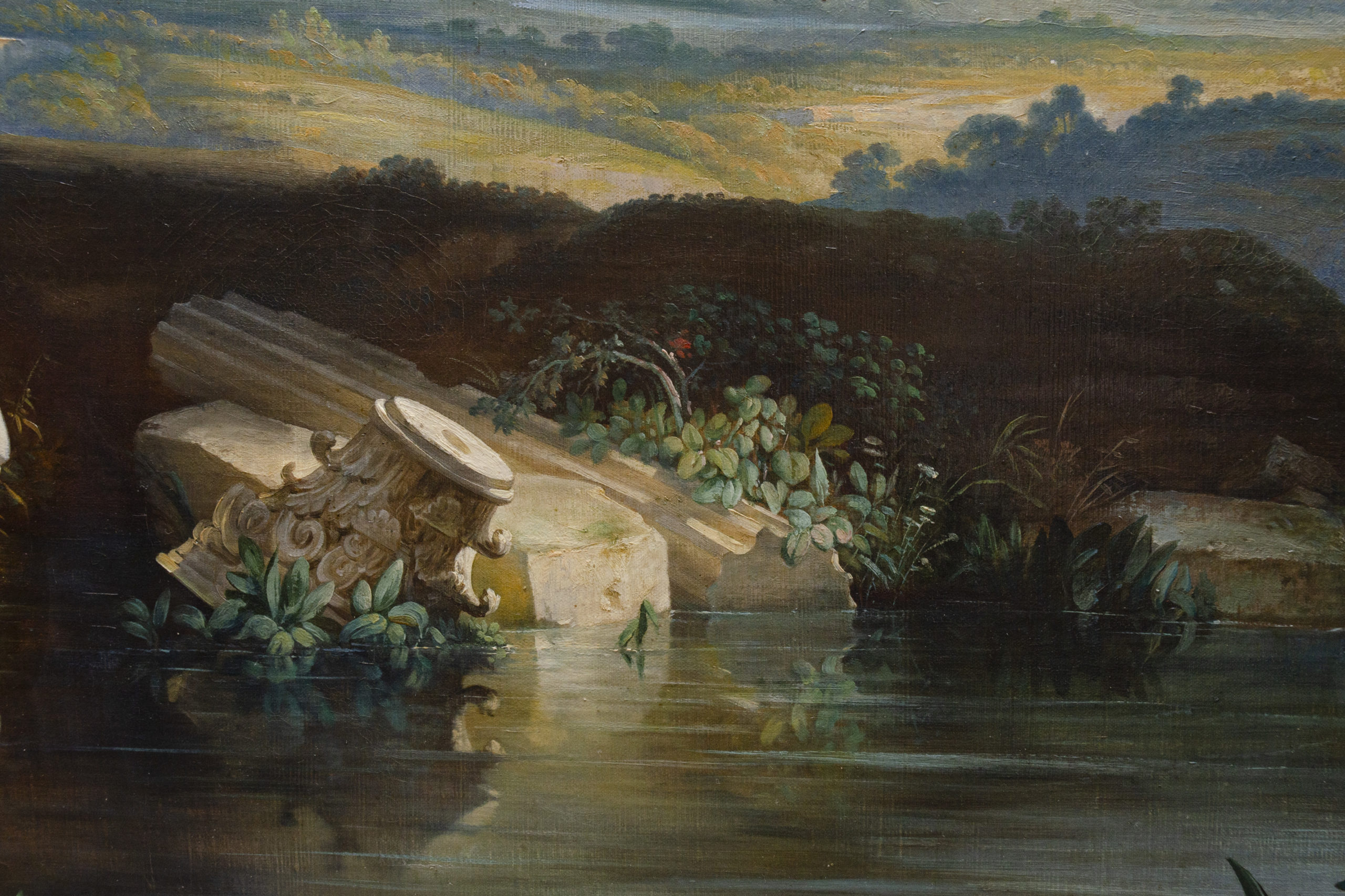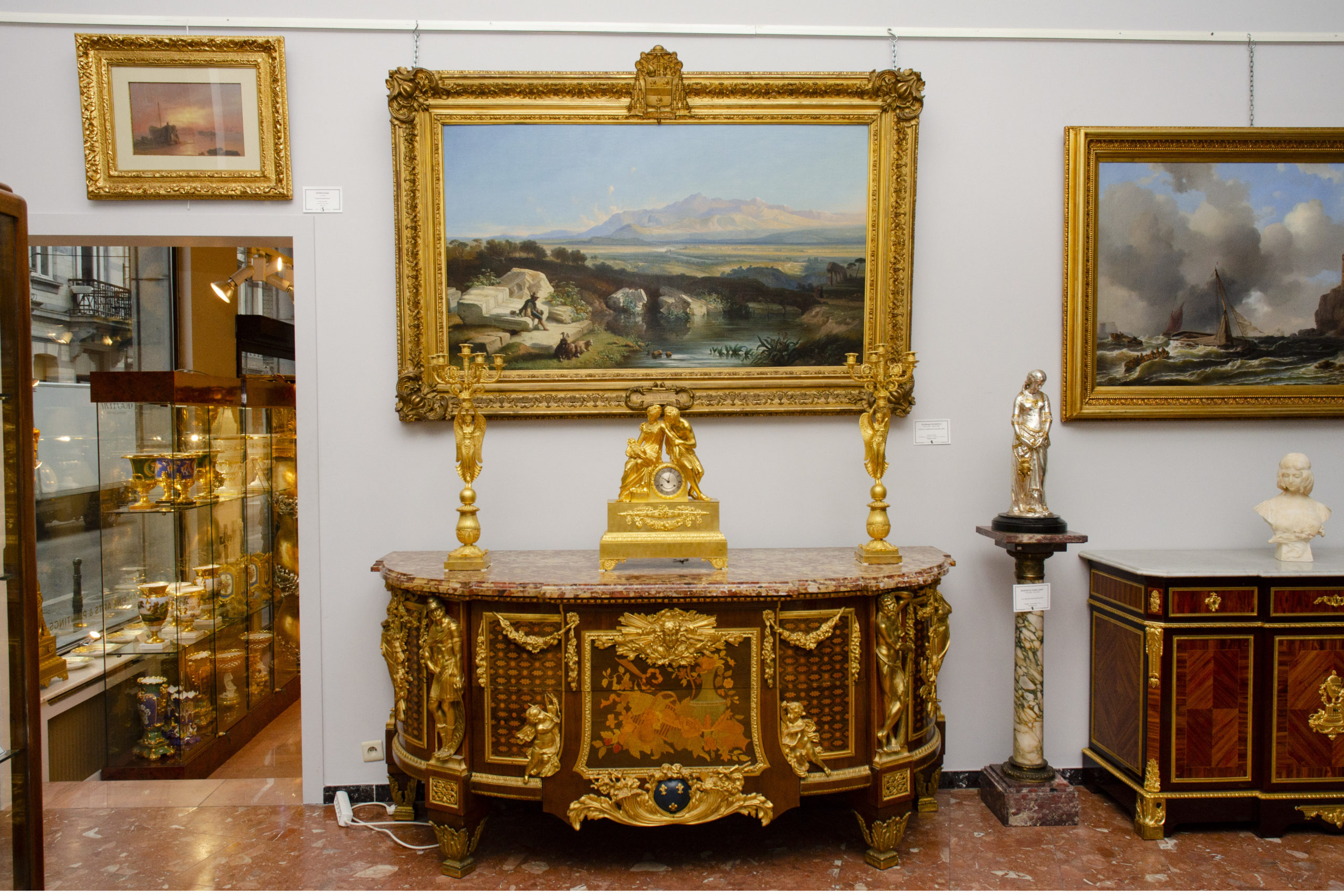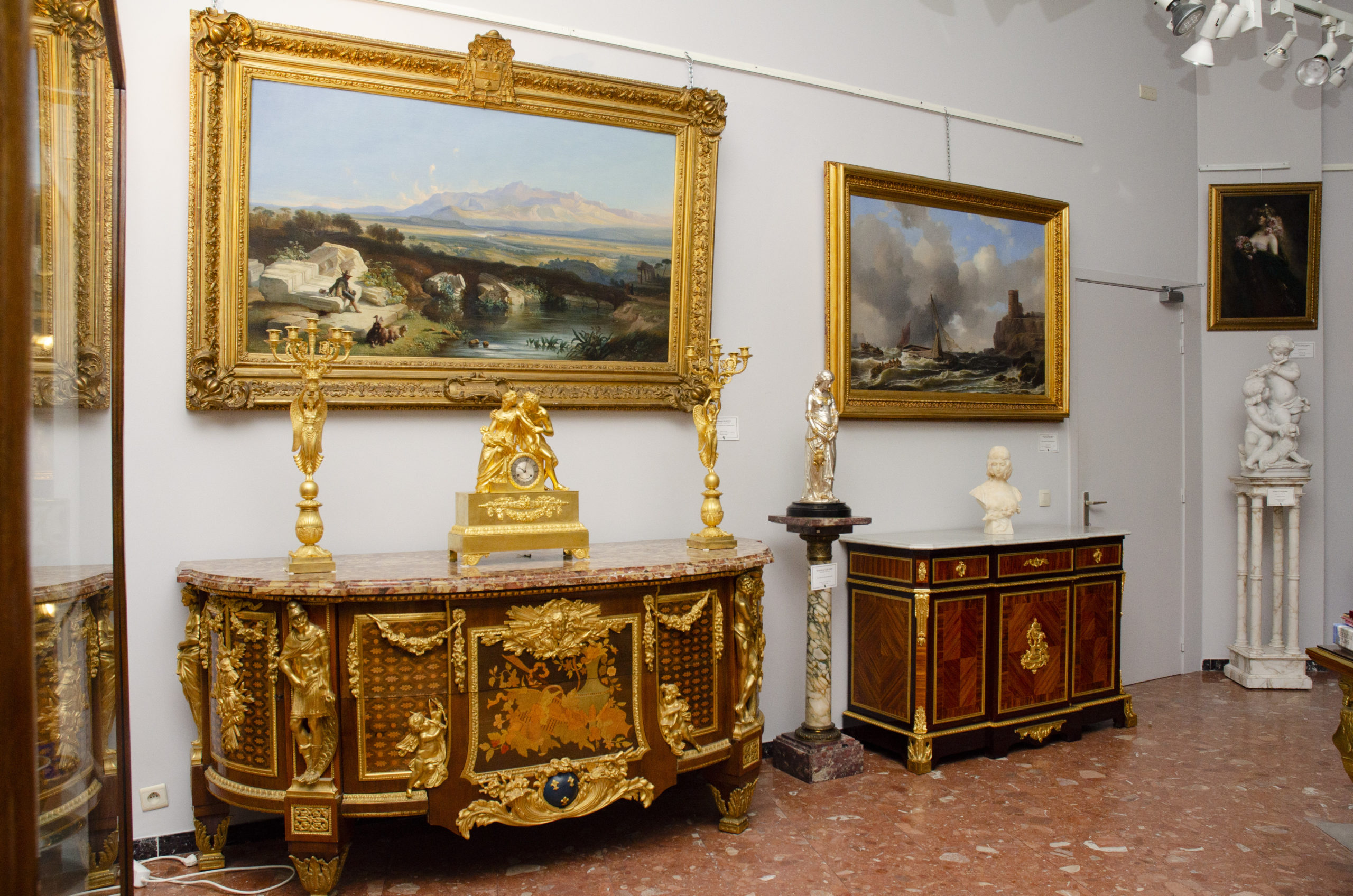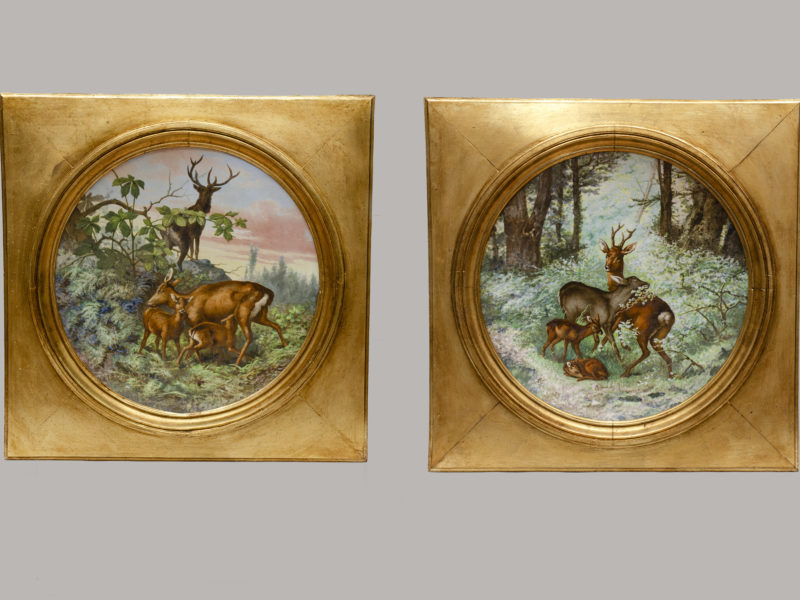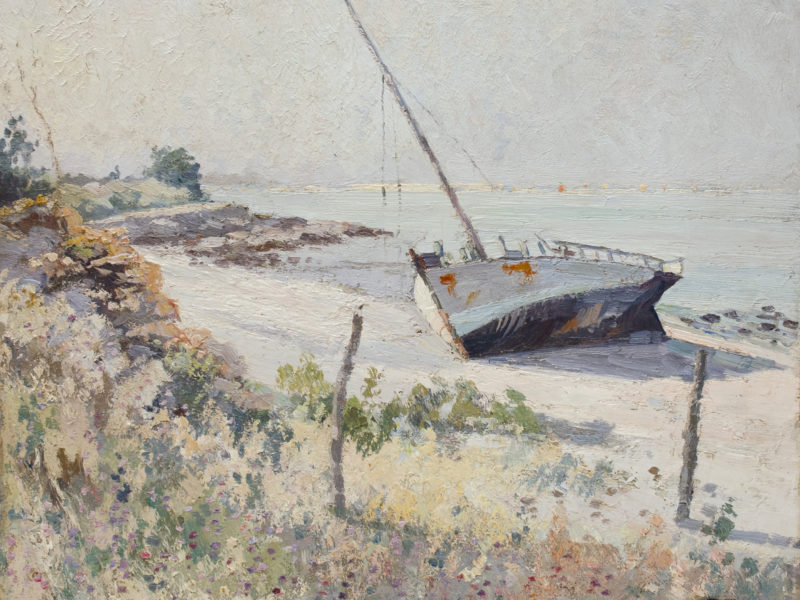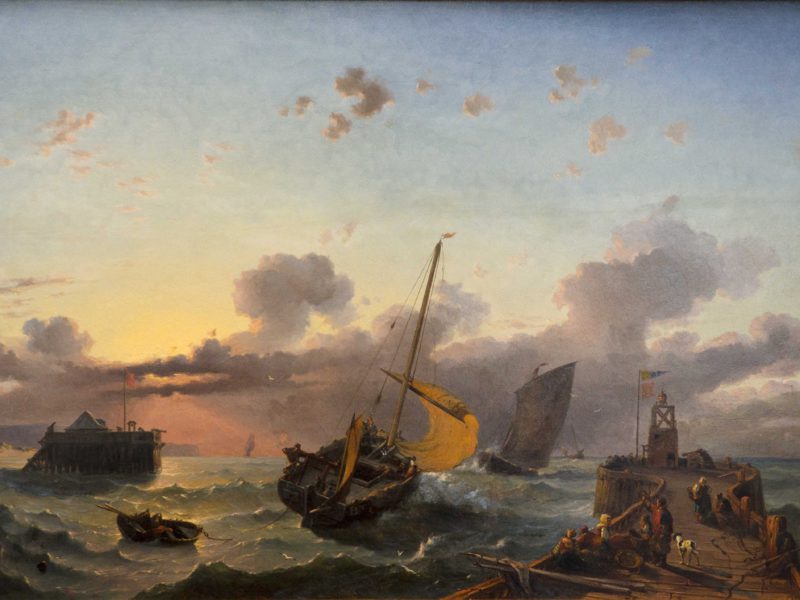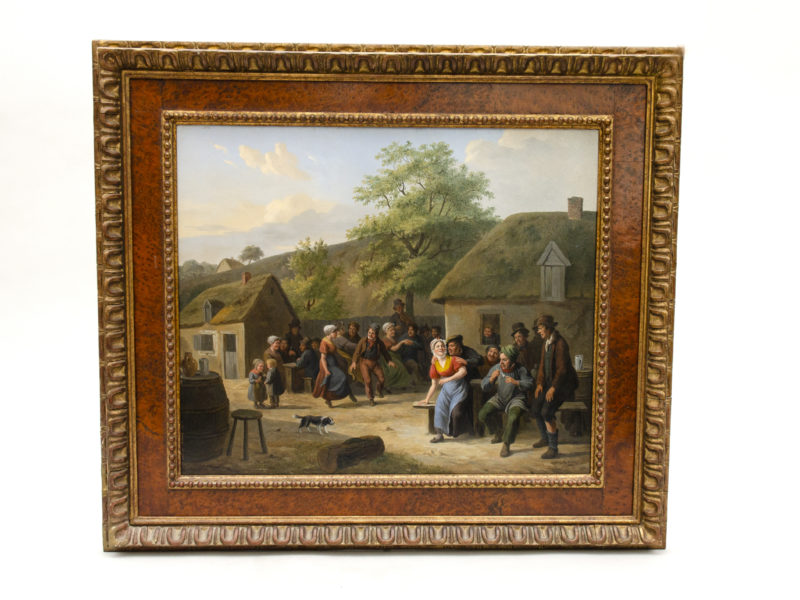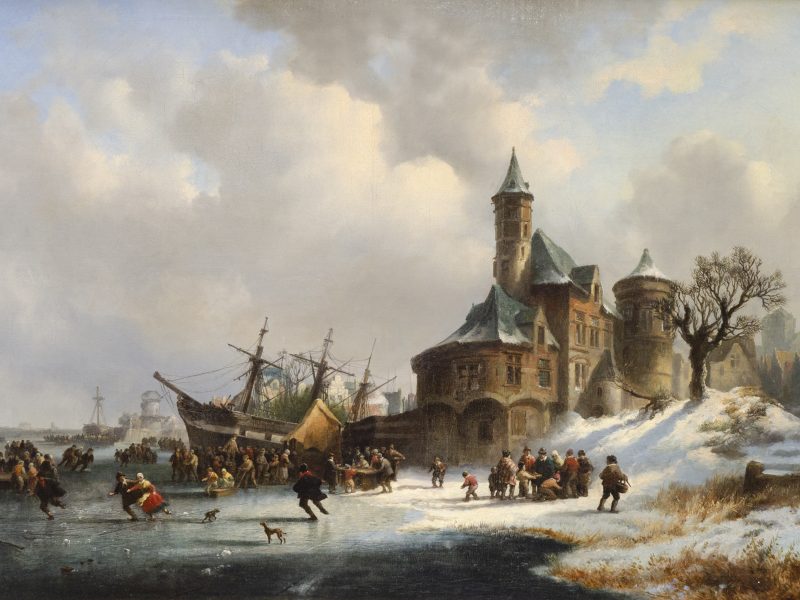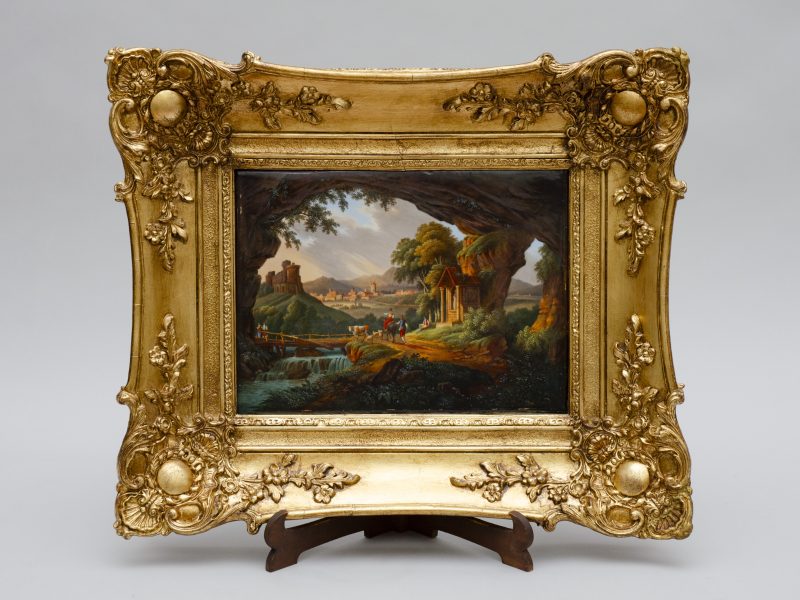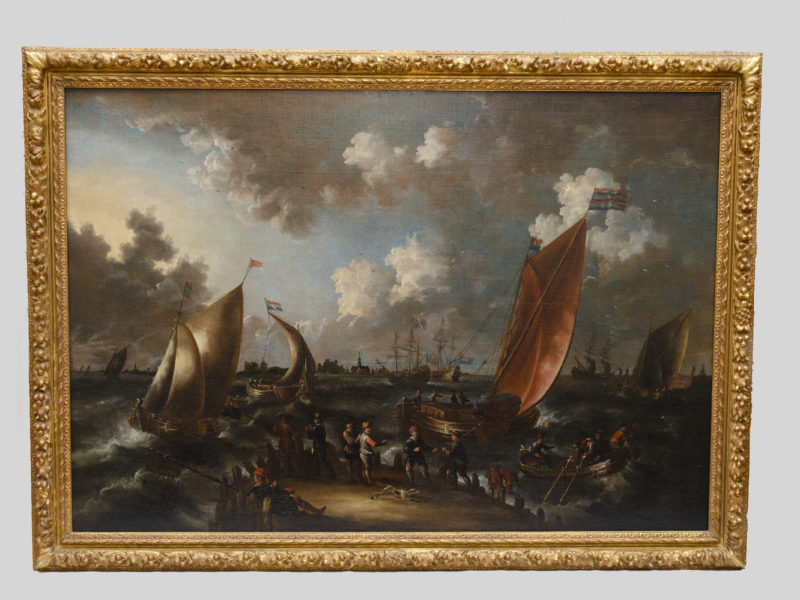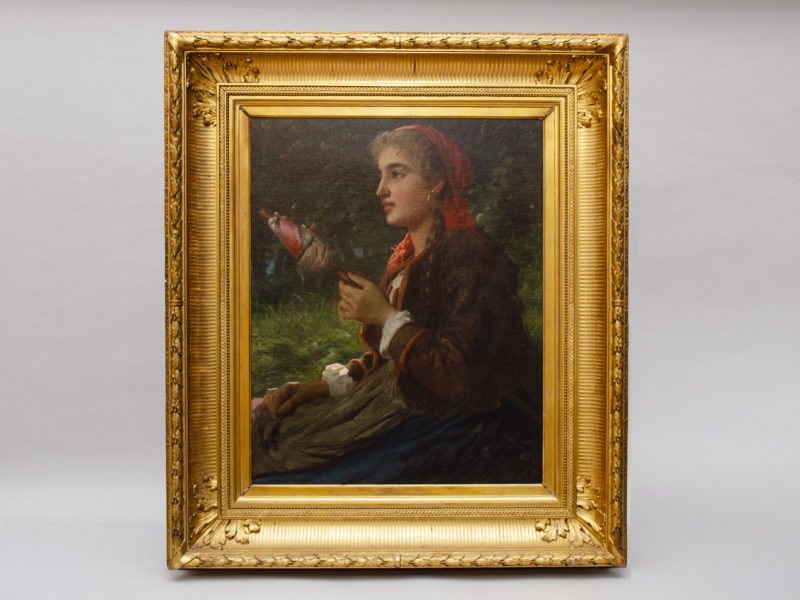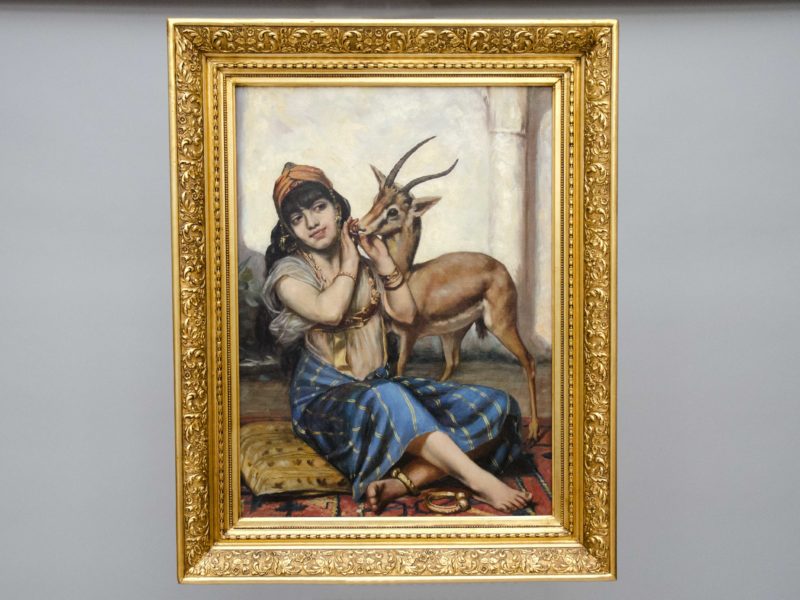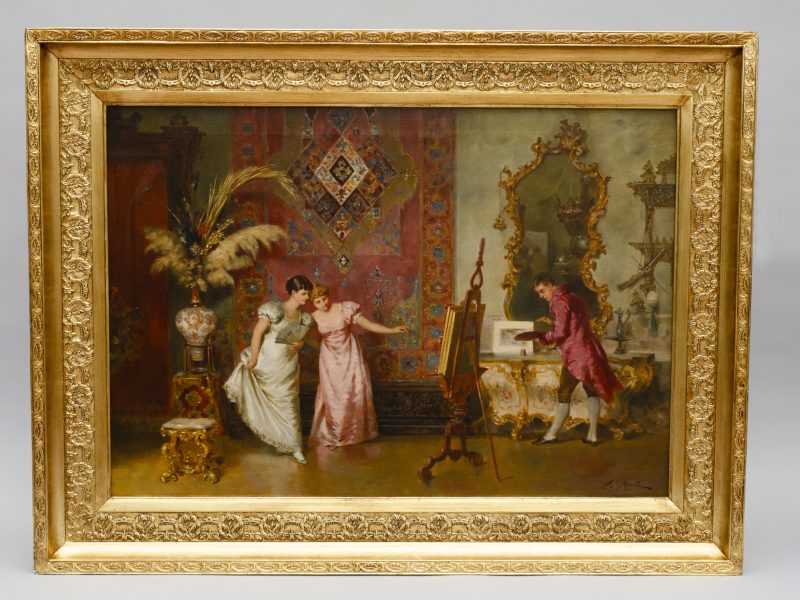“View over the Roman countryside”, Ferdinand Joseph Bernard Marinus (1808-1890)
Price on request
In stock
Contact usA magnificent landscape entitled ‘Campagna di Roma’. A superb view of the Roman countryside, with the Abruzzo mountains rising up in the distance. In the foreground, a shepherd rests near ancient ruins and a small lake. Aqueducts and couples of ecclesiastics in the landscape. Oil on canvas signed and dated lower right Marinus F. and dated 1857. In a stucco and gilded wooden frame with the coat of arms of Théodore de Montpellier (1807-1879), ‘Omnibus Omnia’, bishop of Liège (1852) and assistant to the pontifical throne at the time.
Size: H 96 cm x W 165 cm – H 135 cm x W 202 cm
Belgian school.
Provenance: former collections of the princes of Bethune Hesdigneul and the barons of Moreau.
This masterpiece is to be compared with the large ‘Paysage au passage à gué des bergers’ signed and dated, 1856, from a fine residence in Cannes and offered for sale in Cannes in 2021 (estimate €60,000 – 90,000, see article in the Gazette Drouot).
This would indicate that the travelling artist was on the Côte d’Azur in 1856, ending up in Rome in 1857.
Lit: A native of Antwerp, Marinus received his initial training at the Academy of Fine Arts in his hometown, where his main teacher was Mathieu-Ignace Van Brée (1773-1839), who had completed his apprenticeship in Paris, only to return nourished by the principles of the school of Jacques Louis David (1748-1825). Marinus also attended the studio of Balthasar Paul Ommeganck (1755-1826), who is considered by some to be the precursor of Romantic landscape painting in our region. In his twenties, Marinus travelled around Europe, visiting the great museums to copy the works of the great masters, but also to discover (and certainly draw and paint) nature. He visited France and Paris, as well as Holland, Italy, Germany and Switzerland. In 1835, Mayor Jean-Baptiste Brabant decided to found a painting academy in Namur, which was to become the Académie des Beaux-Arts. Marinus responded to the call for candidates and was appointed to teach landscape. He soon became director of the new institution, where he remained until 1882. In 1845, he was one of the founding members of the Archaeological Society of Namur, the third in Belgium to be created after those of Bruges in 1839 and Antwerp in 1843. Marinus fell in love with the landscapes of the Mosan and Ardennes regions, which he preferred above all others, but he also painted genre scenes, portraits, seascapes and horses, according to the Dictionary of Belgian Painters. He painted many landscapes of the region, including decorative ensembles, such as a series of landscapes and sites of the province for the Provincial Council Chamber between 1851 and 1854.
He trained many pupils there, among whom Jean-Baptiste Kindermans (1821-1876), Jean-François Roffiaen (1820-1898), and Joseph Quinaux (1822-1895) are the most renowned, apart from Félicien Rops (1833-1898) who, while possessing the same knowledge of landscape as them, became better known as an illustrator and engraver. He has long been renowned. A caricature that Félicien, then a pupil at the Académie, made of his teacher can be seen at the Musée Rops.
He died in 1890.
(source: www.namure.be, Thierry Oger on the work ‘Retours des Champs’ at the bateliers in Namur )
In stock
Contact us